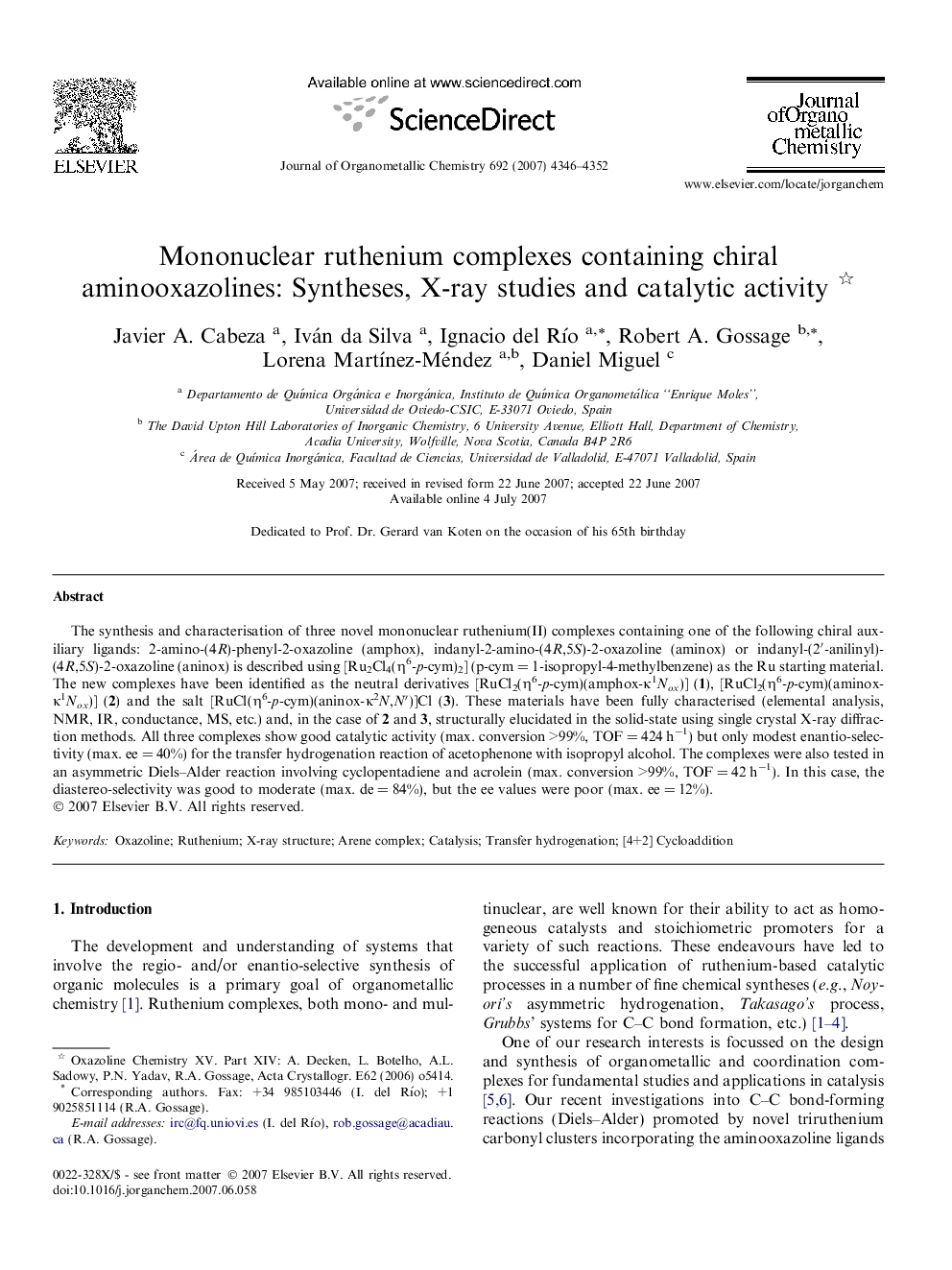| Article ID | Journal | Published Year | Pages | File Type |
|---|---|---|---|---|
| 1325056 | Journal of Organometallic Chemistry | 2007 | 7 Pages |
The synthesis and characterisation of three novel mononuclear ruthenium(II) complexes containing one of the following chiral auxiliary ligands: 2-amino-(4R)-phenyl-2-oxazoline (amphox), indanyl-2-amino-(4R,5S)-2-oxazoline (aminox) or indanyl-(2′-anilinyl)-(4R,5S)-2-oxazoline (aninox) is described using [Ru2Cl4(η6-p-cym)2] (p-cym = 1-isopropyl-4-methylbenzene) as the Ru starting material. The new complexes have been identified as the neutral derivatives [RuCl2(η6-p-cym)(amphox-κ1Nox)] (1), [RuCl2(η6-p-cym)(aminox-κ1Nox)] (2) and the salt [RuCl(η6-p-cym)(aninox-κ2N,N′)]Cl (3). These materials have been fully characterised (elemental analysis, NMR, IR, conductance, MS, etc.) and, in the case of 2 and 3, structurally elucidated in the solid-state using single crystal X-ray diffraction methods. All three complexes show good catalytic activity (max. conversion >99%, TOF = 424 h−1) but only modest enantio-selectivity (max. ee = 40%) for the transfer hydrogenation reaction of acetophenone with isopropyl alcohol. The complexes were also tested in an asymmetric Diels–Alder reaction involving cyclopentadiene and acrolein (max. conversion >99%, TOF = 42 h−1). In this case, the diastereo-selectivity was good to moderate (max. de = 84%), but the ee values were poor (max. ee = 12%).
Graphical abstractThe synthesis and characterisation (NMR, X-ray, etc.) of Ru(II) complexes containing enantiopure aminooxazoline ligands is described. The complexes [RuCl2(C10H14)(amphox)] (1: C10H14 = p-cymene), [RuCl2(C10H14)(aminox)] (2) and [RuCl(C10H14)(aninox)]Cl (3) all show good activity but only modest enantio-selectivity in transfer hydrogenation or [4+2] cycloaddition reactions.Figure optionsDownload full-size imageDownload as PowerPoint slide
